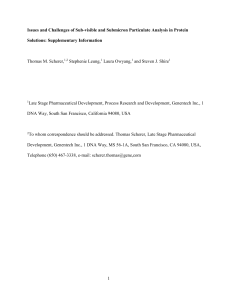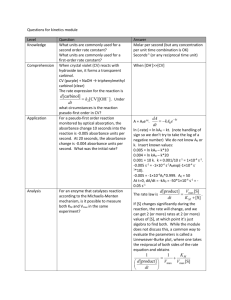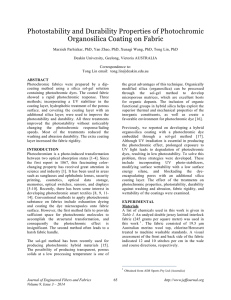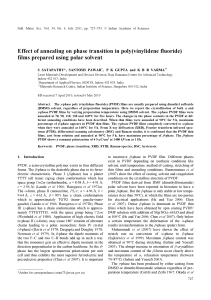Specular Reflection by Oscillating Photochromic Molecules
advertisement
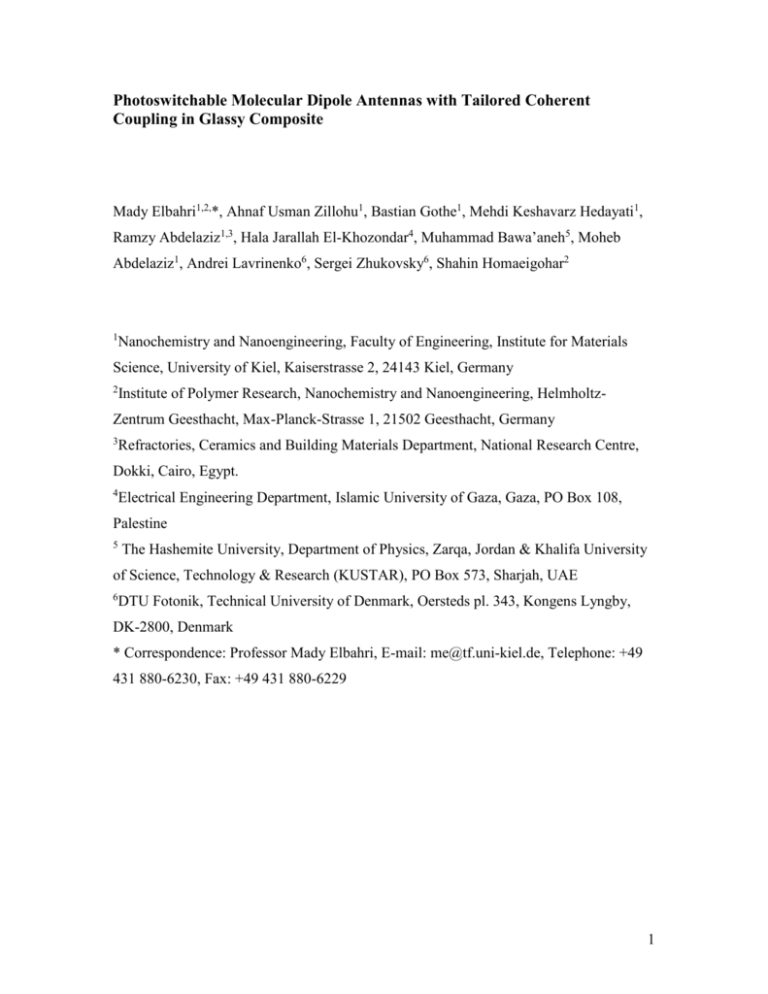
Photoswitchable Molecular Dipole Antennas with Tailored Coherent Coupling in Glassy Composite Mady Elbahri1,2,*, Ahnaf Usman Zillohu1, Bastian Gothe1, Mehdi Keshavarz Hedayati1, Ramzy Abdelaziz1,3, Hala Jarallah El-Khozondar4, Muhammad Bawa’aneh5, Moheb Abdelaziz1, Andrei Lavrinenko6, Sergei Zhukovsky6, Shahin Homaeigohar2 1 Nanochemistry and Nanoengineering, Faculty of Engineering, Institute for Materials Science, University of Kiel, Kaiserstrasse 2, 24143 Kiel, Germany 2 Institute of Polymer Research, Nanochemistry and Nanoengineering, Helmholtz- Zentrum Geesthacht, Max-Planck-Strasse 1, 21502 Geesthacht, Germany 3 Refractories, Ceramics and Building Materials Department, National Research Centre, Dokki, Cairo, Egypt. 4 Electrical Engineering Department, Islamic University of Gaza, Gaza, PO Box 108, Palestine 5 The Hashemite University, Department of Physics, Zarqa, Jordan & Khalifa University of Science, Technology & Research (KUSTAR), PO Box 573, Sharjah, UAE 6 DTU Fotonik, Technical University of Denmark, Oersteds pl. 343, Kongens Lyngby, DK-2800, Denmark * Correspondence: Professor Mady Elbahri, E-mail: me@tf.uni-kiel.de, Telephone: +49 431 880-6230, Fax: +49 431 880-6229 1 The graphical presentation of the photorecovery kinetics of two systems, which were measured first by exposing films of PVDF and PS (containing 10 wt. % photochromic compound blended in polymer) to UV (Labino 35W, 1 minute) and then exposing the sample to white light (“jenalux20”, 30W) for increasing time interval are shown. After each time interval, UV-vis measurement was made in transmission mode. Here A= (absorbance after UV absorbance after white light), and Ao= (absorbance after UVabsorbance without any exposure). The minimum white light exposure was 30s. The switching speed was rather fast. 100 90 Photochromic PS film Photochromic PVDF film Recovery [A/A0] % 80 70 60 50 40 30 20 10 0 -10 0 200 400 600 800 1000 White light exposure time [sec] 1200 Figure S1: Photorecovery kinetics of spironaphthooxazine in PS and PVDF films. Spirooxazine based photochromic molecules in solvent and polymeric matrix has been widely studied. However embedding them in polymeric matrix with different glass temperature can alter the optical properties. In the following, the fatigue switching behavior (measured in transmission mode rather than reflection) of two of the matrices (PVDF and PS) used in this work which were containing the photochromic molecules are presented. 0.28 Photochromic PS film 0.30 Photochromic PVDF film 0.26 0.24 0.20 Absorbance Absorbance 0.25 0.15 0.22 0.20 0.18 0.10 0.16 0.05 0.14 0.12 0.00 0 2 4 6 8 10 12 14 Cycle Number 16 18 20 0 2 4 6 8 10 12 14 Cycle Number 16 18 20 Figure S2: Absorbance intensity variation at λmax, due to cyclic exposure to UV and white light. The upper dots in each cycle represent increase in absorbance upon UV exposure; while the lower dots represent recovery after white light exposure. All the measurements are done in transmission mode. The UV source 2 was “35W Labino lamp” and white light source was “jenalux20” 30W lamp. The triangle represents starting absorbance without any exposure. It turns out that the efficiency of the system as a switch depends on the matrix type. PS (FigureS2 (left)) shows a more stable fatigue switching behavior than PVDF (Figure S2(right)) owing to the low glass temperature of PVDF polymer and hence the enhanced diffusion of the molecules. Thus the system based on a softer matrix (PVDF glass temperature only -30 °C compared to 100 °C of PS) is lasting shorter. Moreover, we expect the easy aggregate formation and thus the loss of Photochromism. 3




